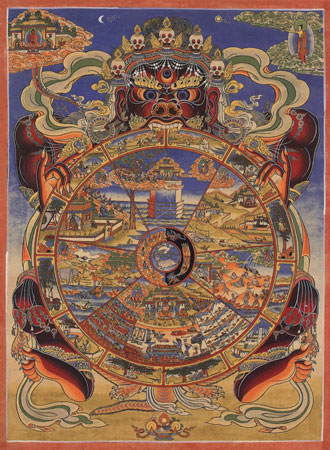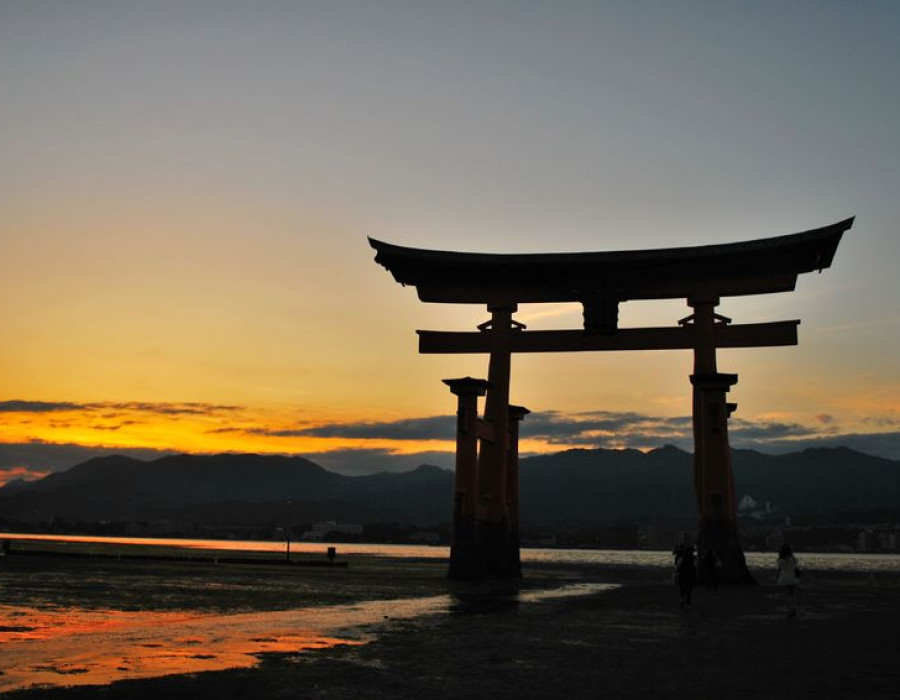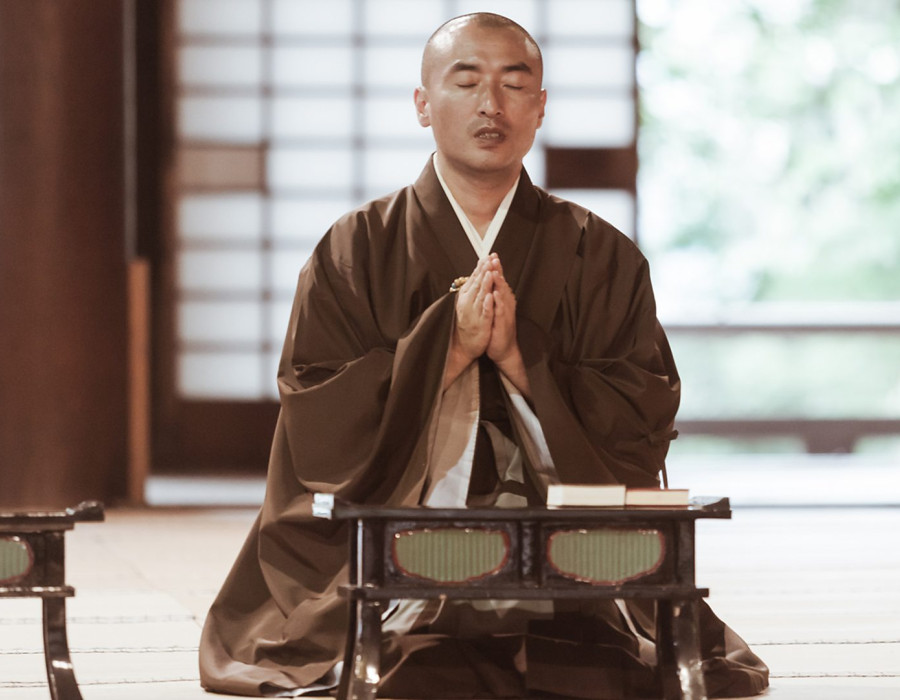
Martin Goodson
Early Buddhist Teachings
A special transmission outside the teachings, Not dependent on words and phrases, Directly pointing to the human heart, Seeing into its nature and awakening.

These words are traditionally attributed to Bodhidharma (28th Indian patriarch/1st Chinese patriarch), who lived 5th century C.E. They are considered to encapsulate the spirit of Chan/Zen Buddhism and so in our story of – What is Zen? - make a good place to start.
The aim of this series of articles is to tell the story of Zen by placing it within the setting of the larger and enfolding subject of the Buddha and his teachings. Zen is a school of Buddhism and to understand the teachings of the Zen Masters it is necessary to understand what the Buddha taught.
These articles are connected by hyperlinks which will be continuously added to in future thus making it worthwhile to re-visit this article to see what has been added. This inter-connection of articles curiously mirrors an underlying teaching in Mahayana Buddhism that all things are inter-related as all things share the same nature and yet simultaneously are distinct one from the other.
EARLY INDIAN BUDDHISM
A special transmission outside the teachings, – What are the teachings referred to in this first line of the verse?
In essence these are the teachings laid down by Gautama Siddhartha Shakyamuni known by his title The Buddha who summed up his teaching as:
‘Suffering I teach, and the way out of suffering.’
The early narratives which tell of the Buddha’s life and his teachings are called the Pali Canon which consists of five collections or Nikayas of books; in Pali a book is called a sutta.
According to the story found in the Pali Canon, the two earliest teachings the Buddha gave after his Enlightenment were
• The Middle Way
• The Four Noble Truths
These teachings expound the facts around why it is that human beings are subject to suffering and how we can ourselves create our own suffering (dukkha). The teachings show how we create a world of suffering (Samsara) through ignorance of our own minds and hearts. They go on to show that there is a way out of the creation of our own suffering and to give the elements of the path that leads away from this creation towards peace at heart (Nirvana).
The path out of suffering, given in the formulation of the Four Noble Truths, is called The Noble Eightfold Path. Originally it was considered that to walk this path to completion would require someone to become a ‘leaver of home’ or renunciate and so the order of monks and nuns was formed. Thus was born the Buddhist monastic order known as the Sangha.
The spiritual path walked by members of the sangha became known as the Arhatpath.
The Buddha once gave a parable, a story, about a man returning home after a full day working in the fields.
It is twilight and as he walks along the darkening path he sees what he thinks is a snake lying his way. This is India and there are many poisonous snakes around. He jumps back in fear and is about to run away when the Buddha tells him to look again. The man does so and realises that what he thought was a snake, in the half-light, is in fact a piece of rope that someone has discarded. He goes to step over it when the Buddha tells him to pick it up and examine it closely. Again the man does as asked and picks it up only to realise that what he thought was a piece of discarded rope is in fact a string of jewels.
This is the story, we don’t know much more about the man, but perhaps we can make a few educated guesses.
Walking home in the growing darkness in India can be dangerous with all sorts of dangers lurking unseen. Although he is not conscious of it, the man will no doubt be aware of those dangers. An ambiguous object is all that is necessary when combined with the thought of danger to trigger a moment of fear in the heart.
The Buddha tells him to ‘look again’ so already a doubt has been placed in his mind about the truth of his experience. Sure enough another glance shows that there is no danger at all. A piece of old rope is to be expected along a path so no surprises there. What is not expected is to find a string of jewels; this is why careful scrutiny is needed to overcome the man’s strong feeling of what is and what is not expected along that old road.
In fact there are strong feelings to be found in ‘my’ strong notions, opinions and expectations which stand up and get in the way of our ability to see clearly.
The Buddha generalised these conclusions out and made it a point of his teaching that the strong passions of ‘wanting’ something which could be an object or expectation; or conversely ‘aversion’ to something such as the idea of a snake can cloud our seeing. This clouding is our delusion known as – avidya. Thus we have what are called the klesas or Three Fires:
• Wanting
• Aversion
• Delusion/Ignorance/False views – literally not seeing clearly
It was the walking of the Arhat path that leads to a gentling of these passions and resulting clarity of seeing replaces the delusive seeing. What is seen is the Truth of things as they really are – also known as the Dharma.
The true way of seeing is characterised by the realisation of what the Buddha called the Three Marks of All Existence.
• All elements are impermanent
• All elements are dissatisfactory
• There is no-self nature in phenomenal existence
A well-known image that exists throughout the Buddhist world is the Wheel of Life.
We see a large wheel in the grip of a ferocious creature with three glaring eyes, an open mouth with sharp teeth and a headdress made up of five skulls. In his claws he holds a large wheel made up of several concentric circles the main section is made up of six segments.
This is a complex symbol and it has several important Buddhist teachings hidden in its imagery.
The ferocious creature who holds the wheel is called in India – Yama – Lord and Judge of the Dead.
According to legend we all stand before him, naked, when we die and he exacts judgement and demands a penalty from us. Hence in some places coins are placed upon the eyes of the body as payment for Yama.
In reality, behind the grotesque picture lies a simple fact – that all phenomenal existence is impermanent. By phenomena, in Buddhism, we refer to both the physical world of people, animals, plants, mountains, cities, worlds, suns and the universe itself plus our ‘inner’ or mental world of cognition, our inner landscape of thoughts, feelings, sense of who we are and what we know and believe etc.
The Buddha realised that there is a tendency in the human heart for something we call ‘I’ to get attached to things.
I like to be on time.
I don’t want to grow old.
If I do something then it must be right.
I just don’t think that is fair!
What the Buddha noticed, in himself and in others too, is that when we do not get our own way over something, or if something I passionately believe is contradicted or prevented then a powerful emotional reaction is born. The problem with this powerful reaction, as seen above, is that while it lasts we do not see the situation as it really is.
A brief look at both religious and political history will show just how blind impulses can cause immense suffering – even when the originating cause may have been just.
This is as true on the individual as it is on the collective level.
The problem as the Buddha saw it is that this clinging is opposed by a world where phenomena such as punctuality, the aging process, perfection and fairness are all subject to impermanence.
This conflict produces our sense of dissatisfaction or suffering – hence the second Mark of Existence.
Does this mean that ‘I’ must somehow ‘rise above’ the world and remain in some cool state of detachment? In fact this is almost impossible to do for any length of time. At best it would be a pretence, at worst, an inhuman coldness. Buddhism talks a lot about compassion and goodwill so clearly it is not pointing to this state of aloofness.
What is being pointed to is being able to live, fully, life in the moment but when the moment passes to be able to lay it down and move with the transformation of the situation and respond accordingly – in a human way.
The third Mark of Existence is perhaps the most difficult to understand as it seems to fly in the face of what is self-evidently true!
The teaching of ‘No-I’ known as Anatta in Pali or Anatman in Sanskrit was a reaction against an original Hindu teaching. ‘Atman’ referred to a cosmic soul entity from which individual souls originated at birth and where they return to at death.
Thus each human had some kind of ‘soul-substance’ that was fixed and unchanging whilst the body and mind may also change arise and pass away. It was this philosophical position that the Buddha denied with the teaching of ‘No-I’.
Is this anything more than just a philosophical position? Does it have any relevance beyond being just a point of view?
As stated above, the feeling of ‘myself’ is very strong in us. We know we have thoughts and that they come and go and we have feelings and moods and they also come and go; but somehow ‘I’ am not these things. We speak thus: ‘I had a thought’ or ‘I am feeling; I felt; I would feel’ etc. It is as if all these things may happen but the ‘me’ to whom they happen remains the same and separate from what is happening. Thus these things either I can make happen or they happen to me.
This view is very far reaching.
Having an ‘I’ as either an ‘actor’ or ‘do-er’ or one to whom things happen means we can entertain thoughts of whether I have free-will or whether my actions are determined (i.e. they happen to me?)
Our system of justice is based upon the view that I am responsible for my choices and thus must bear the consequences of them too. In situations where there is some kind of compulsion then I was not acting freely and thus any judgement must take that into consideration.
So this sense of ‘I’ being a separate and unchanging entity would seem to be quite close to the Hindu sense of an individual ‘soul’ as if Atman was a theory grown to explain and contextualise this intuited self.
Is it this intuited sense of self something that the Buddha denies in his teaching of Anatman? It would appear the answer is ‘Yes’.
If this is so, then there is a big hole in our understanding. Whereas before we could explain having thoughts and feelings, taking action and being responsible for my actions etc. by having an ‘I’ a ‘do-er’ who is the agency in all that happens in my life; suddenly that has been taken away.
Therefore the Buddha had to come up with a whole new series of explanations for what really is happening. This series of explanations are laid out in a series of teachings:
• The Five Aggregates – which explain what a human being actually is.
• The 18 Dhatu – a schemata of the interdependent elements which make up sense consciousness; they also explain how the experience of ‘self’ arises.
• Karma &The 12 linked-chain-of-arising-due-to-conditions – a fundamental re-working of the Hindu teaching of karma and re-birth which gives the mechanism behind how it is that thoughts, feelings and all states of consciousness may arise in succession. It explains how they are programmed and what conditions their birth and their demise.
• Element of existence and the flow of elements – an alternate view of reality which takes a series of fleeing elements as the foundation of reality and sees matter and mental states as compounded of these elements.
These teachings together form the basis of the early Indian Buddhist teachings.






